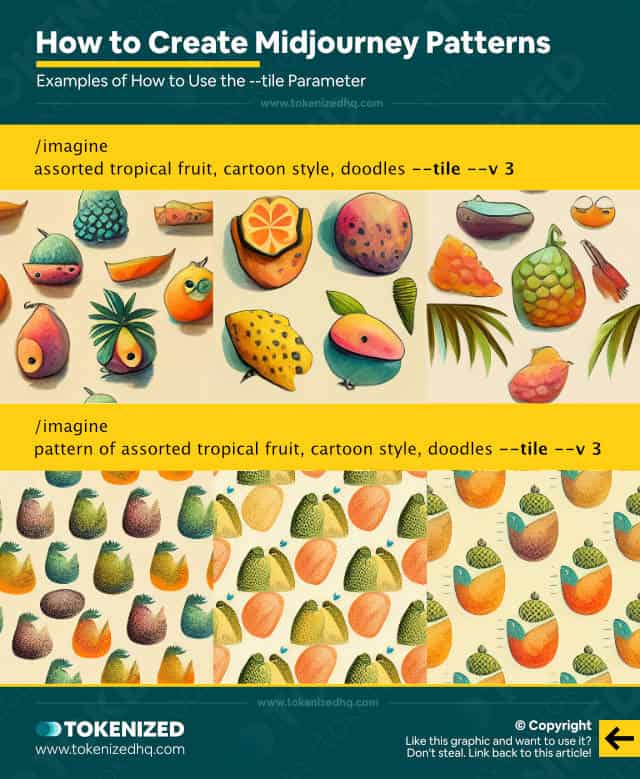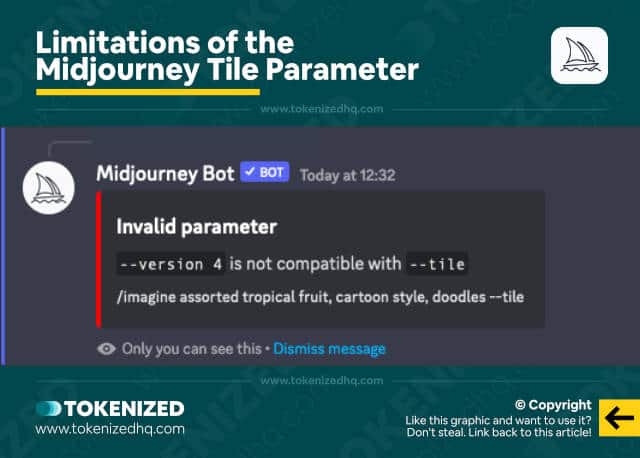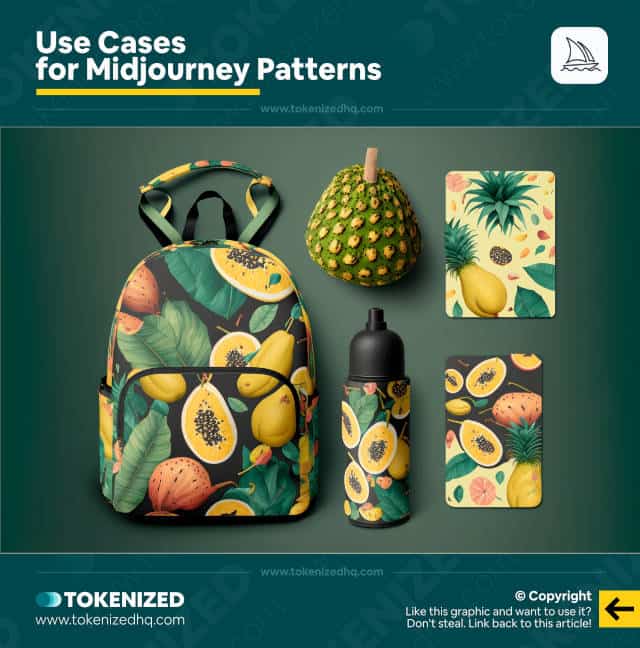Want to learn how to create Midjourney patterns?
Midjourney is best known for creating incredibly detailed and beautiful digital artwork.
But did you know that you can also create seamless patterns in Midjourney with absolute ease?
In this guide, we’ll show you how to create Midjourney patterns and what this feature might be good for.
Let’s dive right in.
Table of Contents Show

Like this content? Then share it!
How to Create Midjourney Patterns & Tiles
www.tokenizedhq.com
Here’s the answer. Great article by @ChrisHeidorn right here: https://tokenizedhq.com/midjourney-patterns-tiles/
How to Create Seamless Midjourney Patterns

UPDATE (1 April 2023):
–tile is now also supported by Midjourney version 5.
It might be complete news to you, but did you know that you can actually use Midjourney to create seamless patterns?
That’s right, not only is it super easy to create Midjourney patterns, the fact that they are seamless out-of-the-box is absolutely game-changing.
A lot of people are not aware of this feature because the Midjourney team hasn’t bothered to update its official documentation properly.
But those who are active on Discord are well aware of the awesome new feature.
So how exactly do you create the Midjourney patterns?
Well, you start off by simply entering a prompt like you normally would, and then all you need to do is add the --tile parameter at the very end.
So for example:
/imagine assorted tropical fruit, cartoon style, doodles --tileAnd that’s it, you’ve created 4 variations of a seamless pattern in no time.
If you don’t want the pattern to look so random and natural and prefer a very structured look, then it sometimes helps if you add “pattern of” before your actual prompt.
The above example would then look like this:
/imagine pattern of assorted tropical fruit, cartoon style, doodles --tileAnd you can do this with just about anything you can think of.
Once you’ve found a variation that you like, you can upscale your Midjourney pattern whichever way you like.
If you want to verify that your Midjourney tile or pattern is actually seamless, you can use a seamless texture checker to see what it looks like.
Key Points (tl;dr)
- You can create Midjourney patterns by simply adding the
--tileparameter at the end of your prompt. - The
--tileparameter is currently only supported by versions 3 and 5 of Midjourney’s algorithm. - However, there is a slight “workaround”. You can remix v4 images and then add
--v 3 --tileat the end to turn them into a v3 pattern. Alternatively, do the same but with--v 5.
Limitations of the Midjourney Tile Parameter

Now, even though the Midjourney pattern feature is great, I’m afraid it does come with some limitations.
Unfortunately, you cannot use the --tile parameter with Midjourney v4, however, you CAN use it in Midjourney v5!
And even though you can use it with the experimental algorithms --test and --testp, the resulting patterns are not seamless, which kind of defeats the purpose of this feature.
So, for the time being, the only way you can create Midjourney patterns is with version 3 or 5.
However, there is one particular workaround.
While it doesn’t let allow you to use the --tile parameter directly with version 4, you can use v4 images to create a pattern.
This process requires 2 steps:
- Step 1: Create your pattern image with Midjourney v4.
- Step 2: Remix one of the variations and add
--v 3 --tileor--v 5 --tileat the end.
Even though it ultimately still uses version 3 or 5 to create the pattern, it uses your original v4 image as an image prompt.
The resulting pattern obviously won’t be in the typical v4 style, but it will be much closer to it than if you had used v3 or v5 directly.
Use Cases for Midjourney Patterns

You might be wondering what such a feature is even good for.
Well, you’d be surprised at how many different industries these patterns might find real-life applications in.
Here are just some of the examples we can think of off the top of our heads:
- Fashion
- Interior Design
- Wrapping Paper
- Merchandising & Print-on-Demand
- Animation & Films
- Gaming
These are all industries that constantly need patterns for all sorts of different products.
Whether it’s for a dress, wallpaper, packaging, bags, or textures in games.
Midjourney patterns have the potential to disrupt so many aspects of the creation process.
Frequently Asked Questions (FAQ)
Before we close off this guide, let’s quickly address some of the most common questions related to Midjourney patterns and tiles.
-
How do you make patterns in Midjourney?
To create patterns in Midjourney, all you need to do is add the
--tileparameter at the end of your prompt and make sure you are using version 3 or 5 of Midjourney’s algorithm. -
How do you tile in Midjourney?
You can create seamless tiles in Midjourney by adding the
--tileparameter to your prompt. Make sure you are using version 3 or 5 of the Midjourney algorithm because v4 currently does not support patterns and tiles.
Conclusion
Midjourney patterns are an often overlooked feature, simply because there isn’t any official documentation on it.
And that’s a pity because it’s just a useful feature for many different types of creators and industries.
Just imagine how much work it can eliminate in the gaming industry by allowing you to create seamless textures out of thin air.
Here at Tokenized, we want to help you learn as much as possible about the AI software industry. We help you navigate the world of tech and the digitalization of our society at large, including the tokenization of assets and services.



